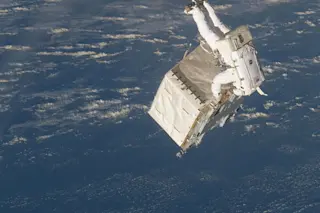Astronaut Ron Garan has no time to come back in for a bathroom break during a spacewalk in 2011. (Credit: NASA) When you’ve gotta’ go you’ve gotta’ go. But what if you’re on a space walk when nature calls? “Spaceflight is not always glamorous,” said NASA astronaut Rick Mastracchio in a video released on the HeroX crowdsourcing site in October which introduced NASA’s Space Poop Challenge—yup, space poop. The goal for participants, aside from winning up to $30,000 in prizes, was to design an in-suit waste management system that could safely move urine, menstrual fluid and fecal matter away from the body without having to use human hands. The catch? It also had to function in zero gravity, ideally, for at least six days. “How is this waste treated such that it does not harm the astronaut or even kill them?” asked Mastracchio. “Given enough time, infection or even sepsis ...
NASA's New Solutions for Problems 1 and 2
Discover NASA's Space Poop Challenge, aimed at creating an in-suit waste management system for astronauts in zero gravity environments.
More on Discover
Stay Curious
SubscribeTo The Magazine
Save up to 40% off the cover price when you subscribe to Discover magazine.
Subscribe













